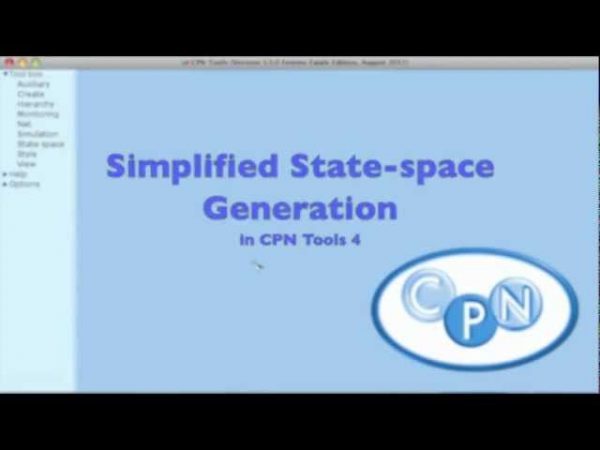Aside from the big new features, CPN Tools 4 also introduces a lot of useful minor features. Here is a mixed grab-bag of those. In this post, I’ll show the new model statistics, new simulation stop criteria, and the simplified state-space analysis. Model Statistics It is often useful to know some statistics of a model […]
Tag: State-space Generation
Demo of Time Intervals and Time-Equivalence Reduction in CPN Tools 4
In this video, I show how time intervals and time-equivalence reduction works in CPN Tools 4 (3.5.3 and newer). get this version while it’s hot from http://cpntools.org/downloads http://www.youtube.com/watch?v=RErP7KXf_QA MichaelTime person of the year 2006, Nobel Peace Prize winner 2012. westergaard.eu/ […]
Read More… from Demo of Time Intervals and Time-Equivalence Reduction in CPN Tools 4
Simplified State Space Analysis in CPN Tools 4

Here, I show how CPN Tools 4 simplifies the workflow when generating state-spaces; rather than having to go thru entering the state-space tool, generating the state-space, generating the SCC graph, and saving the report manually, CPN Tools keeps track of which steps have been performed and automatically performs any outstanding steps. This makes it possible […]
Read More… from Simplified State Space Analysis in CPN Tools 4
Memory-Efficiency in Java
I like to generate state-spaces. I generate a lot of them. And I have made the code efficient enough that I can generate very large ones. Normally, when you code, using hundreds or even thousands of bytes for an object is no issue, but when you multiple 1000 with a million, you suddenly use 1 […]
Characteristics of a Parallel State-space Analysis Algorithm
I’m running some experiments with a parallel implementation of state-space generation and observed something very interesting. I was running the experiments on my own computer (iMac, Core i7 2.8 GHz w/ 4 cores (8 HT) and 8 GiB 1067 MHz RAM). The experiment has been running for almost 4 days now and have just about […]
Read More… from Characteristics of a Parallel State-space Analysis Algorithm
Parallel State-space Generation
I’m doing some state-space analysis at the moment. Instead of bogging down my computer at home, I am running the experiments on our grid. It is a bit overkill, but there is something sexy by running a parallel algorithm on a machine with 16 CPUs. Unfortunately, it seems my algorithm doesn’t really scale that high, […]